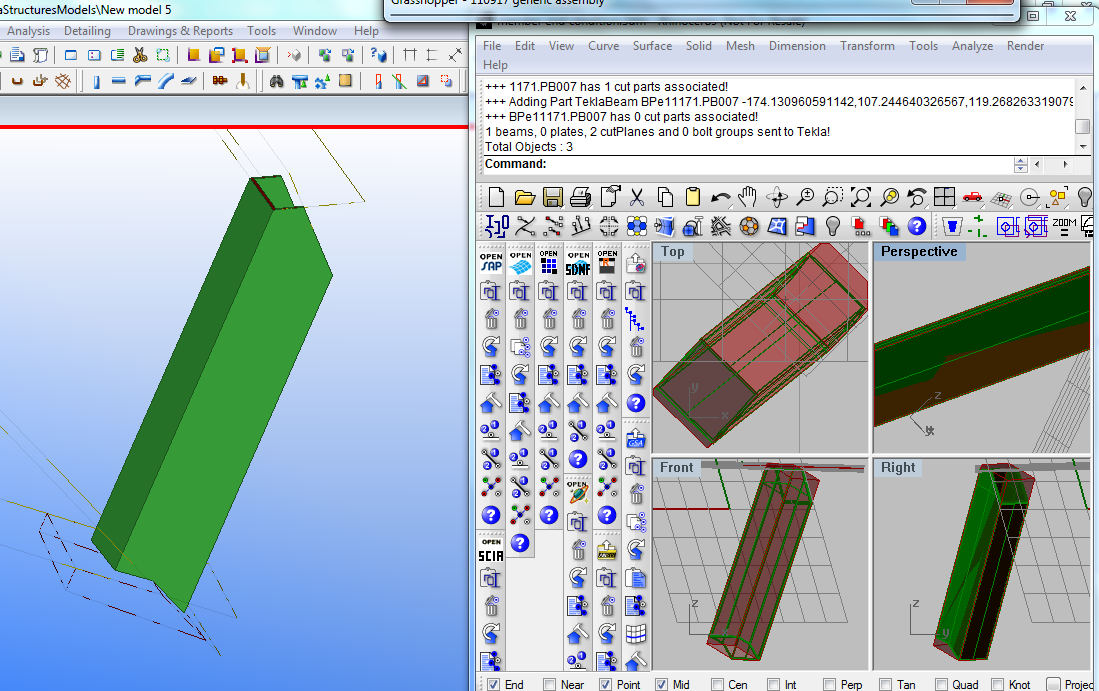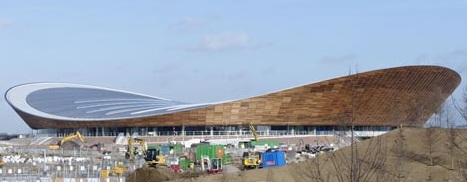I'm not sure how obvious the collaboration is between
Geometry Gym and
[UTO] to develop the Rhino/Grasshopper addons, but it's nice to see a co-authored article published in the Taiwan Architects magazine,
Tawain Architects 2001/07
Here's the article in English
As performative design concepts become more accessible to designers, we will see more analysis tools being developed for the design process. As we establish methods for understanding surface-based-analysis, we will be moving into volumetric-base-analysis.
Generative tools such as Grasshopper3d (Robert McNeel Associates) and Maya (Autodesk) are being utilized to explore architectural projects and inform design decisions with increasing popularity. However, rapidly produced multitudes of options will not be utilized to full potential if entire design team assessments take days or weeks to fulfil. To maximise the potential of these tools, teams must efficiently assess multiple objectives and criteria, to seek optimal solutions. Utilizing the generative information model as input to analysis and simulation tools (including structure, services, environmental, construction programming and cost assessments) can facilitate superior design decisions.
This article outlines and demonstrates software developments enhancing Grasshopper3d as a generative design tool for the architecture and construction industry. Additional functionality enables designers to assign attributes of design elements that can be utilized in exporting the information model for wider design consideration. Present industry practises where multiple models are independently created require consuming efforts in updating and coordinating. Duplicated, abortive and redundant design efforts are rife, and given the time consuming nature of these tasks, the potential to improve and assist these procedures is enormous. There is scope for substantial improvements for this process in the earliest phases of design, when identifying the strongest concepts can have the greatest impact on the final product and the least constraint is experienced to change.
Structural Analysis
Generative modeling for developing structural analysis models has been prevalent for years, primarily in the form of authoring spreadsheets. Geometrical description using imports such as DXF or DWG cad models have also been used extensively, although this process typically requires manual application of analysis attributes not supported such as constraints, materials and loads.
Evaluation of performance relating to alternate design scenarios is accelerated by producing in bulk the structural analysis attributes as related to the generative model.
This is shown for the 3-dimensional proximity truss structure as a Structural Analysis with Geometry Gym plugin for Grasshopper and Oasys GSA
Building Energy Analysis
Ecotect is a highly visual software for architects to work with environmental performance issues. It is designed for early stages of conceptual design, and encourages play to understand environmental factors and interactions. Ecotect works on the principle of “progressive data input”, that means that it is prepared to give visual feedback even with very little information. Not all aspects of a scenario have to be spelled out in detail.
In fact the simulation can be done earlier, and as the model is refined, results become more accurate.
GECO is a Grasshopper plug-in developed by [UTO] that offers a direct link between Rhino/Grasshopper models and Ecotect. The Plug-in allows you to export complex geometries very quickly , evaluate the design in Ecotect and access the performances data, to import the results as feedback to Grasshopper. This could be done as single process or loop to improve performance and the design of a building in the context of its environment.
The single results of the process could be saved inside Rhino in the vertices of the analysis mesh to store data for later use inside different design approaches.































